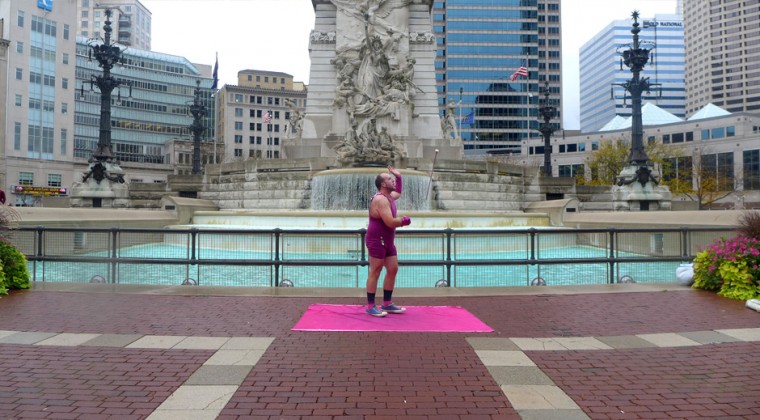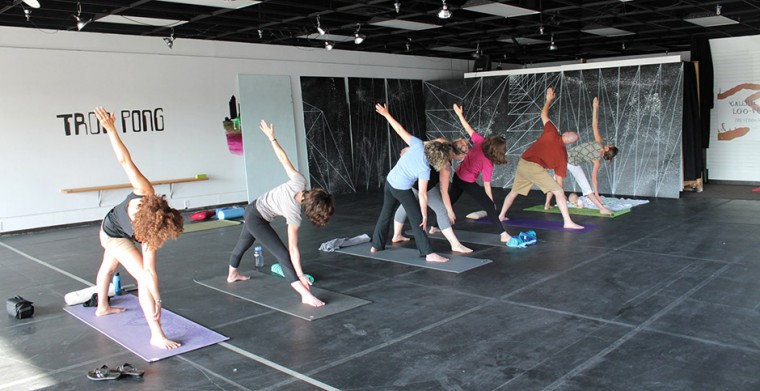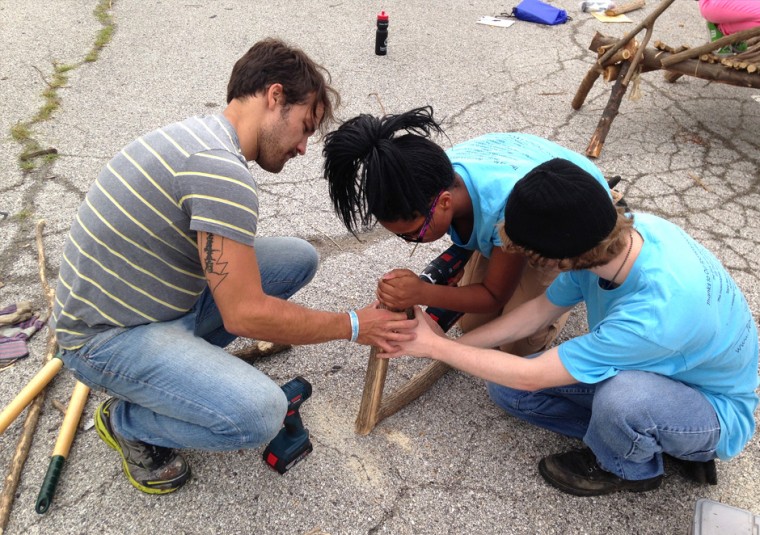by Cara Courage, Thinker in Residence
Art in Odd Places comes to Indy tomorrow and Saturday, two days of art installations and performances around Monument Circle and Market Street to City Market, from dawn until dusk. Ed Woodham, the AIOP founder gave a lecture on the project at IUPUI this week; one of the students asked Ed how he gauges the public’s perception of the work, and this is a pertinent question of art in the public realm – does seeing these interventions have a lasting effect on people or is that effect, like the art itself, just momentary?
Art interventions that are momentary, that have a limited temporality, I call splash interventions – they are dropped into the urban realm like a pebble in a river, make a splash and are then gone. How one measures the impact that these have on the people that see them or may interact with them is a question I have had of my research for some time.
There is a growing voice that sees splash interventions as opening up the meaning of urban space – what can happen in it and done by whom – and reimagines the city.
The temporary nature of this artform opposes fixed meanings of spatial use; this is a porous practice with a ‘loose’ unintended use of space designed to engage passers-by in a moment of play or reflection. These moments are unpredictable and transitory and open up sanctioned meanings of city space. Here, the function of splash interventions is to jolt people’s assumptions about the use of space and from this spark imagination or reflection, or both, and stimulate interest in the place around them. This enhanced or renewed connection to place for some is a process of engagement through alienation or dislocation, the disruption of the expected urban norm makes the lived experience of it active, not passive, the jarring of the arts encounter in the urban space paradoxically creating a connection to it. This will then go on to encourage human interaction in the urban realm that is again different to the norm, which creates a new collective urban experience and strengthens social bonds.
These are grand claims to make. I question how deep this practice is – does this have an impact past the moment of interaction to the next day, or longer? I also question if anything more than a moment of play, of a break from the norm during lunch hour or the walk to work, is the aim of all splash artists.
I have certainly seen splash interventions recreate the city as a space where rules are suspended, make the city become a spontaneous space that is open to a variety of uses and encourage people to express themselves in a different, less formal, way. This is something I am looking forward to seeing over the next two days with AIOP Indy.






